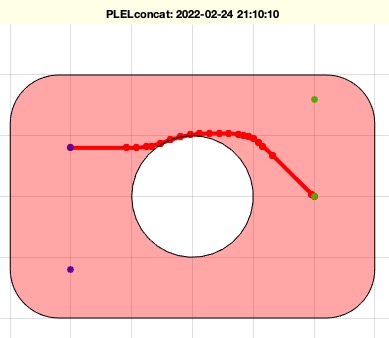PLELconcat
by Tim C. Lueth, SG-Lib Toolbox: SolidGeometry 5.6 - PLEL/Point List/Edge List
Introduced first in SolidGeometry 5.2, Creation date: 2022-02-24, Last change: 2025-09-15
concatenates two different PL and EL and connects them
Description
More complex than VLFLcat because of collision free search path
See Also: VLFLcat2
, crossC2P
, PLshortestpathinCPLcost
, VLnearestNeighborN
Example Illustration

Syntax
[PL,EL]=PLELconcat(PL1,EL1,PL2,EL2,[lnk,CPL])
Input Parameter
PL1: | | Point list 1 |
EL1: | | Edge list 1 |
PL2: | | Point list 2 |
EL2: | | Edge list 2 |
lnk: | | if true; an additional edge is created to connect PL1 and PL2; default is false |
CPL: | | to connecting edges should be collision free inside a CPL |
Output Parameter
PL: | | Point List |
EL: | | Edge List |
Examples
PL1=rand(4,2)*20; EL1=ELofPL(PL1,true); PL2=rand(3,2)*20+[10 0]; EL2=ELofPL(PL2,true);
PLELconcat(PL1,EL1,PL2,EL2)
PLELconcat(PL1,EL1,PL2,EL2,true)
PLELconcat([-10 -6; -10 4],'',[10 0; 10 8;],'');
PLELconcat([-10 -6; -10 4],'',[10 0; 10 8;],'',true);
PLELconcat([-10 -6; -10 4],'',[10 0; 10 8;],'',true,CPLsample(31));
Copyright 2022-2025 Tim C. Lueth. All rights reserved. The code is the property of Tim C. Lueth and may not be redistributed or modified without explicit written permission. This software may be used free of charge for academic research and teaching purposes only. Commercial use, redistribution, modification, or reverse engineering is strictly prohibited. Access to source code is restricted and granted only under specific agreements. For licensing inquiries or commercial use, please contact: Tim C. Lueth
Last html export of this page out of FM database by TL: 2025-09-21